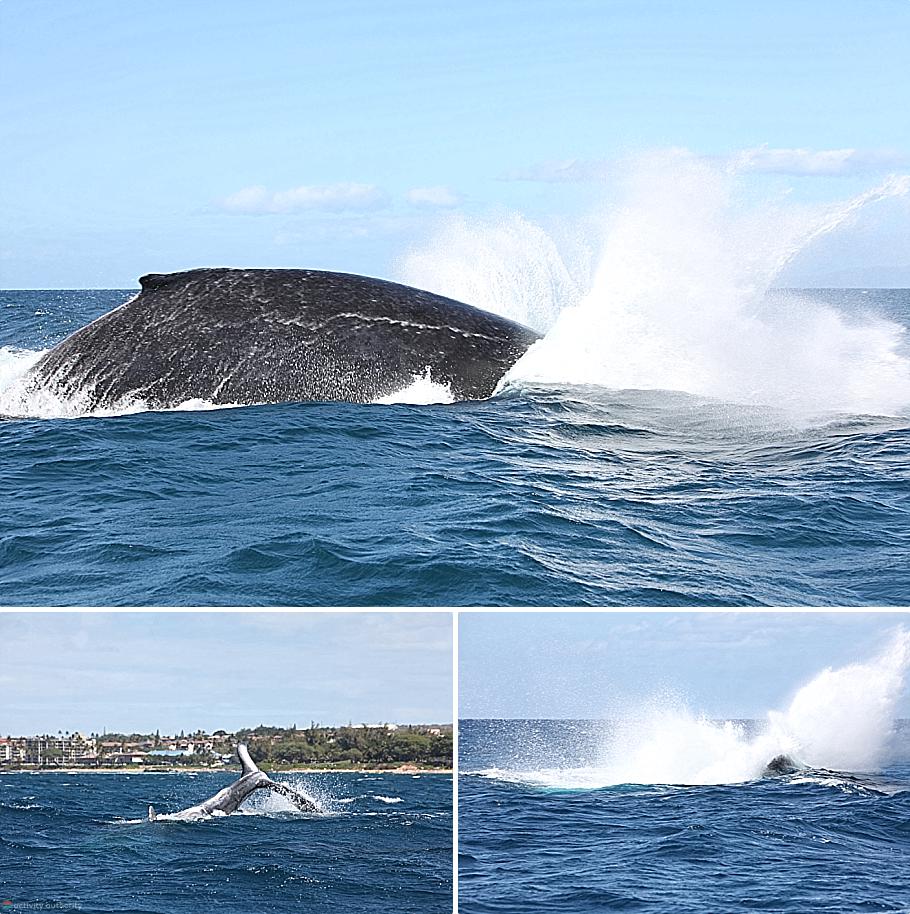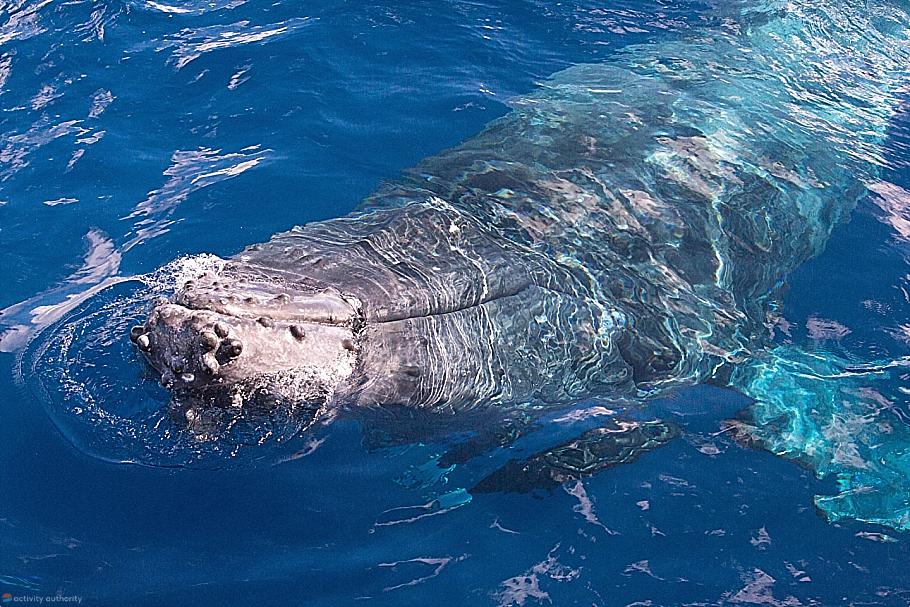Maui County is a special place for many reasons, but one of its most beloved residents are the world-famous humpback whales. Every year, these majestic creatures migrate thousands of miles to take refuge in the warm waters just off the coast of Maui. But why do they love Maui so much? Join us as we explore the mystery behind why humpback whales love to visit Maui County, as well as other uncovered whale mysteries!
Why Maui?
Before we dig into the many other mysteries of the humpback, we’ll start with why it’s believed that whales in Maui are more common than in other warm-climate whale destinations. If you look at the ocean floor, you’ll see that the islands that make up Maui County used to be connected: Maui Nui. Due to the ocean floor being relatively shallow, it’s believed humpbacks appreciate safety from predators, which often attack from below. We also believe they love this area due to the warm Hawaiian waters (who wants to give birth or “get busy” in cold water?) And though you’ll still see migrating humpbacks on north shore beaches, your best bet is on the west or south side, facing the other islands.
More Humpback Mysteries Resolved!
The movements of individual whales, particularly in the main Hawaiian Islands, are characterized by their transient nature. These magnificent creatures typically spend merely a few days in a specific location before moving on to another area.
Humpback whales, renowned for their lengthy lifespans, have the ability to live for over 50 years. Although they generally have an average life expectancy of around 35 to 40 years, some can survive even longer, demonstrating their resilience and robustness. We’re told the island lifestyle makes Maui humpback whales live even longer.
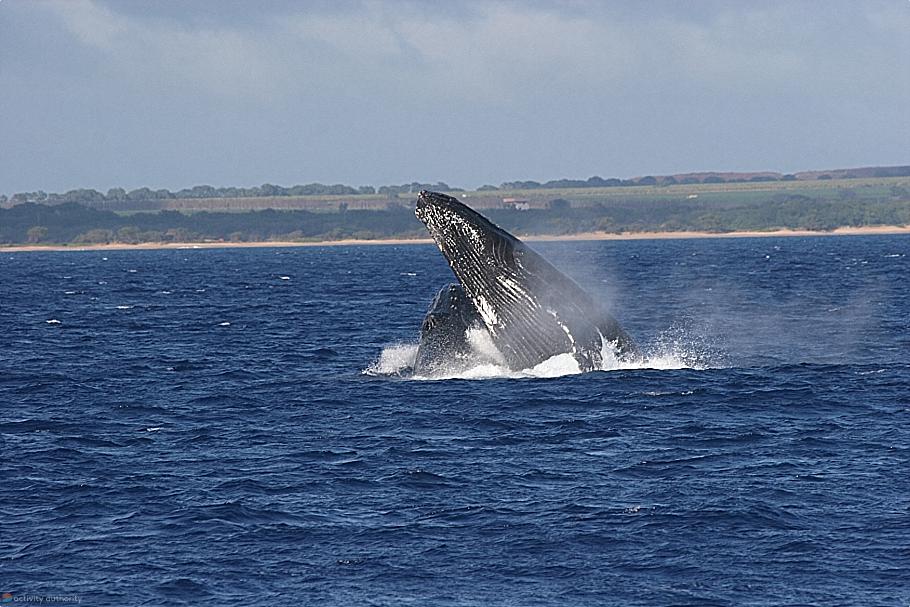
Historically, humpback whales have faced a significant threat from commercial whaling practices, which led to the unfortunate demise of more individuals than were killed by natural predators. Prior to the proliferation of whaling, it is estimated that the North Pacific humpback whale population was over 20,000 strong. However, the numbers sharply declined to less than 1,000 by the mid-1970s, highlighting the severe impact of human activities on this species. In response to this alarming situation, commercial hunting of humpback whales was outlawed, providing much-needed protection for these majestic marine mammals. The ban serves as a critical measure aimed at preserving their existence and promoting the recovery of their population.
The primary defensive mechanism of a humpback whale against predators is its formidable tail. When feeling threatened, the whale may aggressively thrash its tail on the water’s surface or wield it like an enormous karate chop, effectively keeping predators at bay.
Fun Fact:
The legendary Moby Dick, a character from the realm of fiction, was an all-white sperm whale. In contrast, the only verified albino humpback whale sighting occurred in 1991 off the eastern coast of Australia. This unique white whale has been sighted on numerous occasions since its discovery, earning the nickname Migaloo, which translates to “white fellow” in Aboriginal language.
Maui Whale Observations
Anthropogenic noise pollution in the ocean, originating from sources such as large vessels, oil and gas exploration, as well as military activities, significantly impacts the humpback whales’ ability to communicate effectively and navigate their surroundings. In more severe instances, these loud disturbances can inflict substantial harm to the delicate structures of the whales’ inner ears, resulting in long-lasting consequences.
The eyes of Maui whales possess a uniquely designed cornea and lens, enabling them to have exceptional vision in both aquatic and aerial environments. This excellent eyesight allows them to easily navigate both below and above the water’s surface.

Breathing for whales is a unique process that differs from humans and other animals. They do not respire through their mouths but rather through a specialized opening on the top of their head known as the “blowhole.” Each species of baleen whale, including the humpback, breathes through a blowhole that features two distinct openings akin to nostrils in terrestrial mammals. On the other hand, toothed whales and dolphins possess a single opening within their blowholes for respiration.

Enthusiasts of Maui whale watching often get excited when they witness the captivating behavior known as “spy hopping.” During this act, a whale gradually emerges from the water with its head first, gracefully unveiling its eye above the water level. This fascinating display allows the curious creature to have a better look and gather information about its surroundings, providing onlookers with an exceptional and memorable sight.
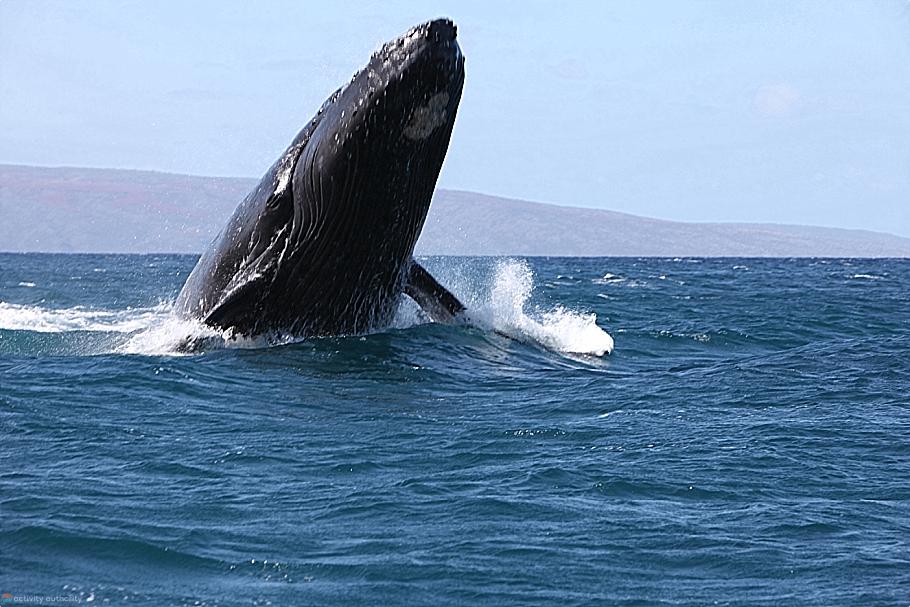
Humpback whales are known for their diverse range of social sounds produced by both males and females. However, only the male humpbacks exhibit the ability to sing, with their melodic tunes most commonly heard during the winter months on their breeding grounds. The intricate repertoire of social sounds from humpback whales comprises snoring, coughing, squeaking, rumbling, and trumpeting, which can be detected not only underwater but also at the water’s surface.
Exhibiting pectoral fin movements might serve as a means of communication, such as an enticing invitation. By creating noticeable disturbances on the water’s surface through fin waving and slapping, mother whales seem to prevent their offspring from straying too far. Furthermore, when male and female whales engage in courtship rituals, they also use these fin gestures to stimulate and motivate each other in their mutual pursuit. But when on Maui whale watching tours, we think they’re just waving to us.
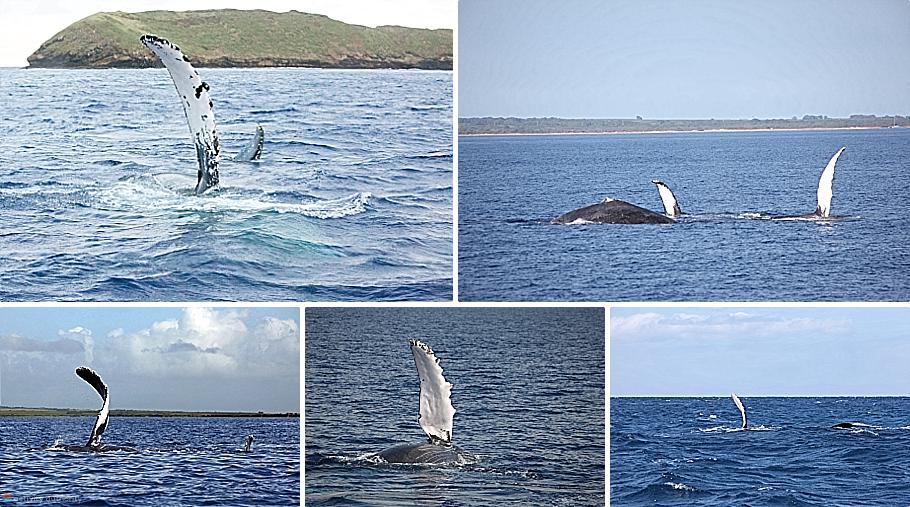
While often characterized as “gentle giants,” humpback whales possess powerful and intimidating physical attributes – primarily their head and tail. These body parts act as formidable weapons, particularly during combative encounters. It’s common for mature male whales to exhibit numerous scars and lacerations resulting from these aggressive exchanges. In one particularly intense instance, an adult male humpback whale succumbed to its injuries and perished during a violent confrontation. We actually witnessed Humpback whales breach on top of each other in order to injure or scare the competition.
About Humpback Whale Reproduction
Humpback whale calves possess a comparatively smaller oral cavity, accounting for 15 percent of their total body length, while adult humpbacks have mouths that make up around 25 to 30 percent of their entire length. For these newborn mammals, having a robust tail is of greater importance than a large mouth. This is because the calves need to develop exceptional swimming capabilities right from birth, even though they won’t begin capturing and consuming fish for almost 18 months.
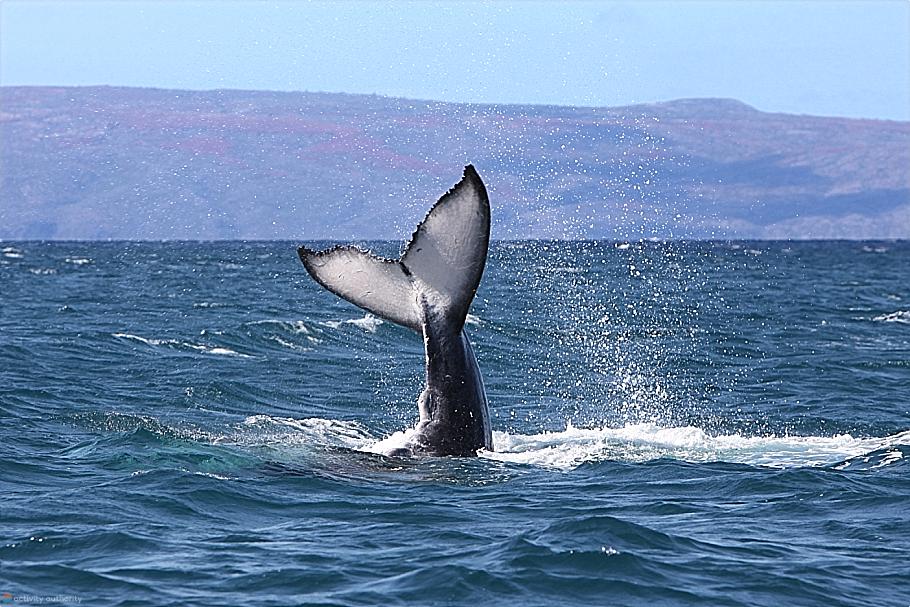
During the winter months, the number of sexually active male humpback whales seeking to procreate surpasses the quantity of ovulating female humpbacks available for mating, resulting in fierce competition among the males. Consequently, only the most dominant male humpbacks, determined by factors such as size and overall fitness level, will have the opportunity to mate successfully and reproduce.
The height of the mating season for our Maui whales occurs between February and March. During this time in Hawaii, one gets to witness an impressive increase in the number of vocalizing whales, a remarkable surge in whale populations, and the formation of much larger and significantly more competitive groups of these marine mammals, known as pods.
As for distinguishing between male and female humpback whales, their genital regions appear quite similar at first glance. However, upon closer inspection, one can note that the female whale boasts a prominent bulge near the end of her genital opening, referred to as a hemispherical lobe. Additionally, a key difference between the sexes lies in the spacing between the anal and genital openings; males display a noticeably wider gap in comparison to their female counterparts.
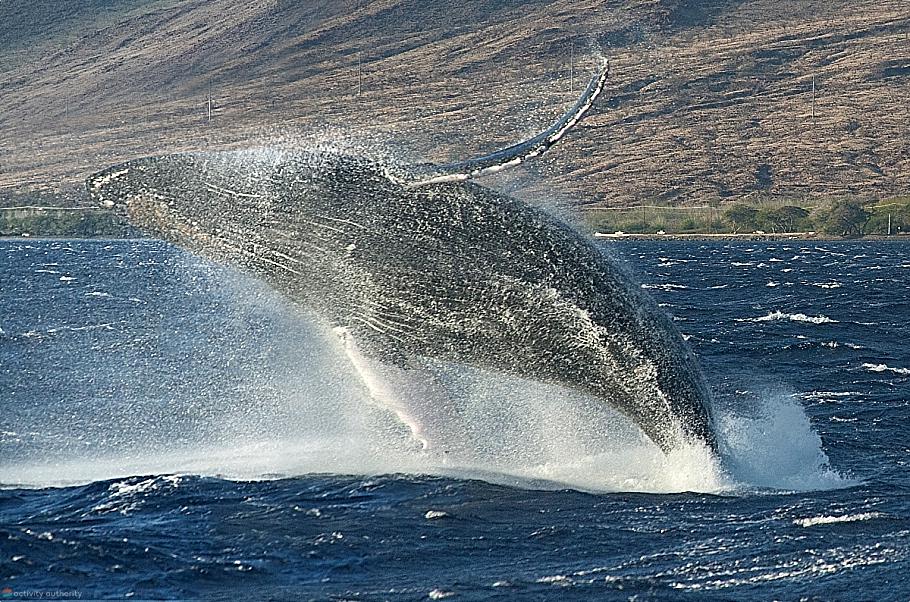
Generally, female whales give birth to a single calf because the entire process of pregnancy, birth, and nursing requires a significant amount of energy and resources. When a calf is born, it instinctively rises to the water’s surface to take its first breath of air. However, the young whale must rely on its mother’s guidance to learn crucial skills such as diving beneath the surface and effectively regulating its buoyancy.
Humpback Whale Migration and Feeding
As the winter migration comes to an end, humpback whales commence their journey back to their feeding areas. The migration order typically begins with newly pregnant females heading out first, as they require ample time to gather resources for their upcoming pregnancy. Next in line are the juvenile whales, followed by the adult males and females. The last to depart are the mothers with their newborn humpback calves, who ensure their offspring have developed the necessary strength and skills to embark on their first long-distance voyage. The intricate and varied order of migration showcases the fascinating social structure of these majestic marine creatures, adding to the richness and complexity of their underwater world.

Humpback whales are known to feed in coordinated groups that may consist of up to 15 individual animals. A designated leader within the group utilizes a distinct feeding call and produces bubbles to synchronize the actions of the other group members. These fascinating creatures display a myriad of feeding techniques. One method involves expelling air through their blowhole to create bubble formations such as dense clouds, intricate nets, or even linear patterns, which serve to confuse and herd their prey.
When it comes to feeding, Humpback whales have the extraordinary ability to dislocate their lower jaw, allowing them to open their mouth at an angle greater than 90 degrees. Additionally, they are capable of stretching the elastic ventral pleats found in their mouth, which enables them to expand their oral cavity up to four times its usual size.
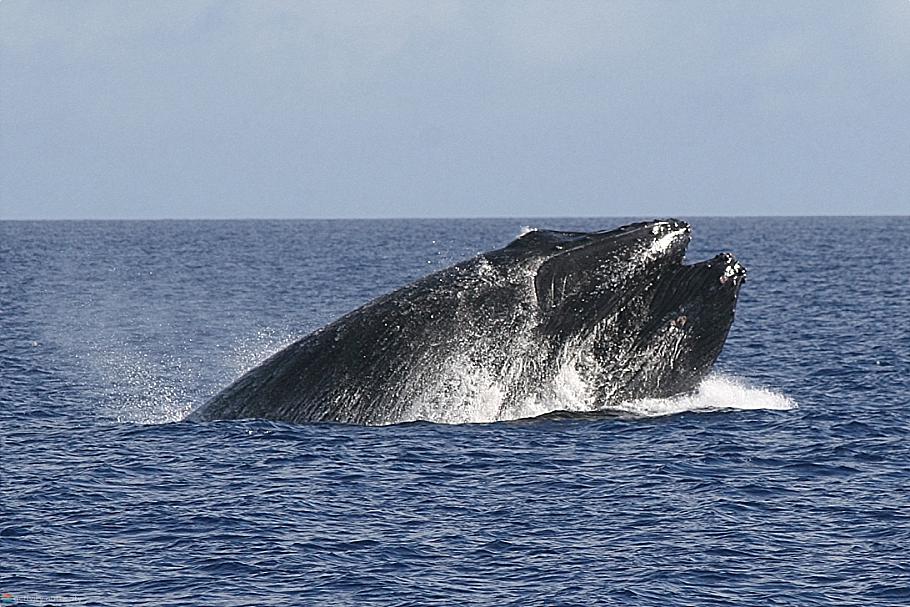
When in the waters of Maui, our North Pacific humpback whales bring a sense of wonder and mystery that can’t be found anywhere else in the world. Scientists have many theories on why these creatures choose to make their home in this particular spot, but we believe they’re here because it’s warm, shallow, protected, and there’s an overwhelming sense of Aloha. Whether they come for the warm waters or just because they love it here, one thing is certain; we are lucky to share Maui Nui with these gentle giants.
Make sure to do a Maui whale watching tour while visiting the Valley Isle! If you arrive between Mid-December and April (Hawaii humpback whale season), you’re in for some serious whale sightings.









